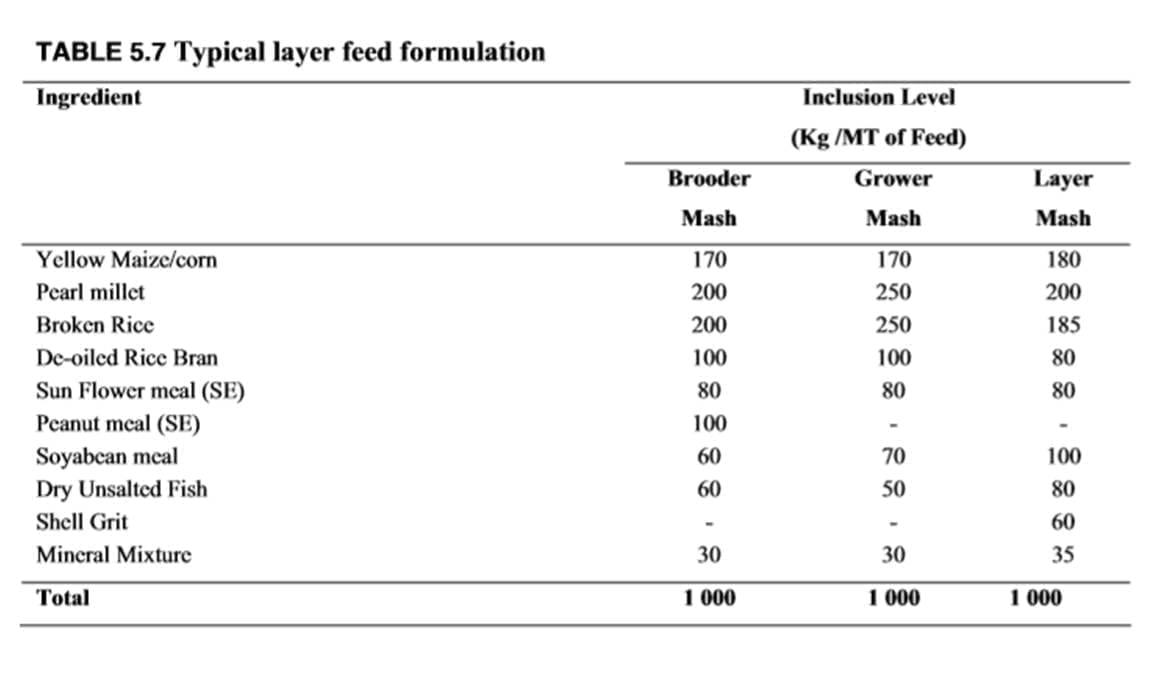
Need expert advice on the best poultry feed formulation?
[Looking to make your own homemade chicken feed?:)]
If you want to know how making your own formula:
- can make you more profit
- produce better quality eggs and meat
- give your farm a unique selling point
…then this is the guide for you (+ there’s an example formula at the bottom!).
Enjoy.
Why ‘homemade’ formula makes great business sense…
Here’s a great reason why EVERY poultry farmer should get into homemade formulation…
It is well known that feed represents about 70-75% of operational costs at any typical broiler and layer farm…
It is important to evaluate the nutrient requirements of poultry feed produced…
Along with conducting an economic analysis of the poultry production…
Profitability and feed quality differences.
Further reading: Technical and Economic Analyses of Poultry Production – ScienceDirect
The study above makes insightful reference to the key issues surrounding poultry feed and the drive to formulate custom blends.
Here’s the outline in case you missed it:
- feed cost equals 70-75% of operational costs of poultry farm
- important to evaluate nutritional content
- because of cost proportion, poultry feed warrants economic analysis (impact on profit)
- care must be taken when exploring feed options to consider quality differences
In short, the digest of the points above leave every poultry farmer (…whatever country, scale or model) with the following summary:
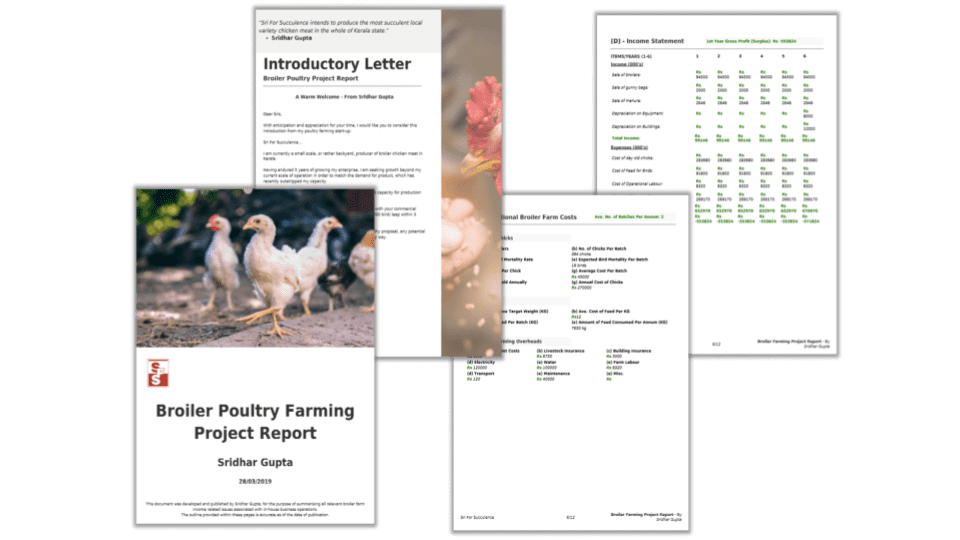
Write Your Poultry Business Plan -
in Just 90 Mins!
Poultry Project Reporter 2.0 - fastest way to write your project report online.
Get Poultry Project Reporter 2.0- Poultry feed is the vast majority cost competent to running a layer or broiler farm…
- Nutritional content directly impacts the health and performance of the birds & therefore your business…
- Examining cost saving potential on poultry feed could substantially increase your profits…
- However, diligence in quality control must be taken to ensure you don’t compromise output
This equals:
A massive business incentive to formulating your own cheaper poultry feed!
So, in short:
- No matter how small or large your poultry farm project…
- You have much to gain by assessing cost saving measures against your feed costs.
- Better managed procurement exercises can always ‘shave‘ small percentages on the cost of buying necessary farming inputs…
- But, to take a huge bite (excuse the pun…) out of your chicken farming costs…
- Discover significantly cheaper alternative poultry feed formulations to the commercial grade stuff in the bag.
- But, to take a huge bite (excuse the pun…) out of your chicken farming costs…
So let’s deep dive into the basics of poultry farm nutrition…
Poultry Nutrition: The Basics of Formulation
Nutrients in poultry food are the essential building blocks of growth, maintenance and therefore poultry farming production.
They sustain your bird’s ability to function optimally…
And to support your farming business with the profitable output that your financial projections depend on.
Let’s take a glance at the nutritional components of your bird’s optimal diet:
- Proteins;
- Carbohydrates;
- Fats;
- Minerals;
- Vitamins;
- Water
…But what part do these play in the bigger picture?
Consider these nutrients the raw materials which your bird’s bodies are primed to convert optimally…
Into whatever is most needed at any given interval for best output & production performance.
The overall demand of each constituent and their most readily absorbed and assimilated form varies depending on:
- breed
- age
- gender
- type etc…
But not to get too complicated too quickly, let’s dig deeper into those listed nutrients and what importance they have.
[A] Protein in poultry nutrition
Protein on a simple level is the building block for most tissues within the chicken’s body, like muscle of all kinds, connective ligaments etc…but also, substances like Albumin in eggs.
Specialised chemical messengers like natural poultry hormones for regulating bodily functions like:
- reproduction cycles for egg laying, for example, are also comprised of proteins.
Other critical functions within the body of the chicken, even like food digestion, is also controlled by specialised protein-based chemical helpers, called enzymes…
These are responsible for effective breakdown of feed via chemical digestion…
Presenting the chicken’s body with the most readily usable format of nutrients for efficient and effective utility.
Your birds are constantly using their reserve of protein for functions much like the ones above.
Therefore, their reserves need continual replenishment to maintain an ‘even keel’ so to speak in production of eggs and chicken meat.
Protein being a general term for the classification of nutrient can be further broken down into constituent parts, known as amino acids.
A quick comparison would be…
To look at proteins as whole words which could be grouped together as protein complexes to make sentences…
If you understand this, it follows that:
Amino acids are like the alphabet letters which make up the words (proteins).
Get the right sequence of letters, you can make up the right words and your communication is clear.
Get the wrong letters and you are unable to make the right words and your communication is deficient.
The same applies to the relationship between proteins, their composite amino acids and the complexes which proteins assemble to make.
Think of Scrabble…
And a chicken’s body continually searching for the right letters to make the necessary words…
And sentences…
To output the desired results.
Further reading: Fish Feed Technology – FAO
The source of a chicken’s protein should be varied.
Grains generally contain 8-9% of crude protein (barley and sorghum) whilst higher protein content can be found in wheat, oats and triticale at 12%, according to the FAO.
Other reliable sources of dietary protein for poultry are: vegetable oils such as in palm kernel cake, legumes like chickpea, cowpea and mungbean, and fish meal.
More precisely, the essential amino acids in poultry are (in no particular order):
- Arginine,
- Histidine,
- Isoleucine,
- Leucine,
- Lysine,
- Methionine,
- Phenylalanine,
- Threonine,
- Tryptophan and
- Valine
According to studies, the most critical to get right in your poultry feed formulation are:
Lysine and Methionine.
Why?
They impact the growth rate of broilers & also egg production in layers most significantly.
Deficiency in these translate to under production…
Excess of protein equally reduces production yield, overloading their bodies…
Therefore damaging your poultry business profits considerably.
[B] Carbohydrates & Fats in poultry nutrition
Carbs and fat are the fuel to keep things going for your chicken.
Much like other types of fuel, like with vehicles for example, the importance is in it’s value for energy conversion.
In the case of poultry feed, metabolisable energy (ME) is a common phrase used to define the comparative energy content of feed.
The official definition of metabolisable energy (ME):
“(ME)…represents the energy available for growth or reproduction and for supporting metabolic processes such as work (locomotion) and respiration [expressed as KCal per kilo of feed]”
Further reading: Metabolisable Energy (ME) – Encyclopedia of Marine Mammals (Second Edition), 2009
This ME is the critical content value of feed which dictates intake.
More KCal availability, the less fuel needed to keep things going optimally within the bird’s body.
Less KCal availability, the more fuel needed…increasing feed intake.
Certain fuel release more drive than others.
Alongside protein content, this Kcal or calorie measure is equally touted as a leading measure indicative of poultry feed quality.
This relationship is coined as C:P ratio.
This is a balance which needs keenly calibrating according to factors such as:
- climate
- disease
…typically, hotter climates and presence of disease decrease feed intake amongst birds.
It is necessary therefore in decrease the ME or energy content of the feed…
To conversely increase the overall quality of nutritional uptake.
Again, it’s a fine balance, which requires experience to get right.
[C] Vitamins in poultry nutrition
Vitamins are integral biochemical factors for maintaining optimal conditions for mission critical functions like:
Metabolism.
Metabolism is the driver for growth and adds strength to body and egg integrity.
These vitamins are both naturally occurring and can be added via supplements.
How are vitamins grouped or classed?
Typically, they are classified as either:
- water soluble, or;
- B complex
- …thiamin (B1), riboflavin (B2), niacin, pantothenic acid, pyridoxine, biotin, choline, folic acid and cobalamine (B12)
- Vitamin C
- B complex
- fat soluble;
- Vitamin A
- Vitamin D
- Vitamin E
- Vitamin K
Which of these are the most important vitamins for poultry weight gain and egg production?
Vitamins, A, B2 and D3.
[D] Minerals in poultry nutrition
Minerals are a universal factor in the process of producing tissues such as bone, blood, egg shell and meat in the chicken’s body.
Minerals are a common supplementary addition to poultry feed diets.
“Macro”, “Micro” and “Trace” are all pretexts used regarding dietary minerals – referring to their respective amounts require…Macro being the most in demand and trace being the least.
Calcium in particular is in heavy demand in broiler and layer egg production for bone and shell production respectively.
How do you calculate if your flocks are getting enough nutrition?
Poultry feed nutrition is usually estimated according to overall weight of feed of a particular composition.
Broilers and layers each have differing levels of optimal nutritional demand.
Significant proportions of total nutritional value of poultry feed can go underutilised due to:
- loss during storage
- destruction in the digestive tract
…as a consequence it is common practice to account for this loss in the buffering of an extra margin of nutritional content in feed mixes.
Costs vs. benefits of formulating your own poultry feed
As stated earlier, due to the disproportionate level of cost due to poultry feed…
There is great economic benefit to be gained if you hit upon a winning formula.
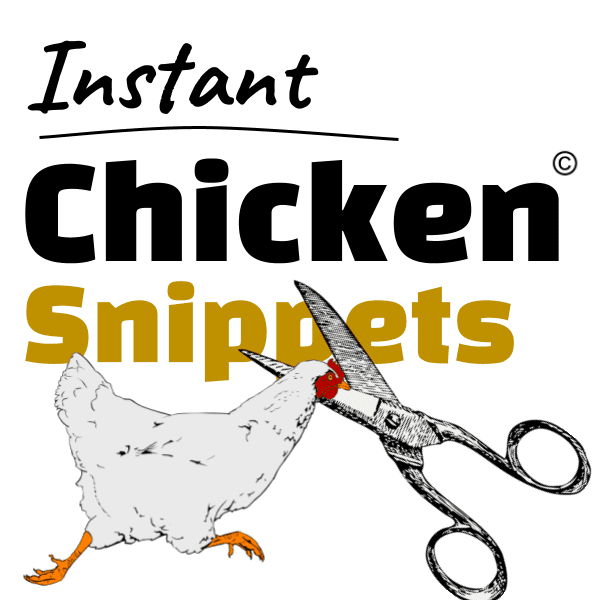
Read The Poultry Business -
Like Never Before!
Chicken Snippets Newsletter - deep poultry analysis to sharpen your acumen, by email.
Get My NewsletterAs a baseline of nutrition content of poultry feed, we reference the following table:
Further reading: Good practices in planning and management of integrated commercial poultry production in South Asia – FAO
The above ingredients contribute the usual commercial poultry feed mix – commonly found in most marketplaces.
The items themselves are interchangeable with alternatives of similar content.
As for what substitutions work best…
There are no hard and fast rules.
Each geographic location will benefit from it’s own profile characteristics of readily available poultry feed substitute ingredients…
Success in this field of alternative ingredient sourcing is dependant upon:
Resourcefulness.
Taking the castoffs and waste/by-products of other production processes in the locality can provide…
A rich source of relatively cheaper ingredients with yet equivalent nutritional quality.
Not only can this drastically reduce poultry feed costs, but also medicines and supplements costs.
Are there any hidden costs to acquiring alternative poultry feed ingredients for a homemade mix?
Yes.
Sourcing and preparing ingredients for your own homemade poultry feed mix takes additional time and effort.
This hidden cost must be factored into the eventual ROI estimation.
Also, reduced cash flow although increased profit may still be a stifling circumstance.
Why?
Because where raw materials are found locally, although they can be charged at lower prices…
They are usually sold at very high wholesale volumes, which make it prohibitive to access for many micro poultry farmers, whose budgets are strictly tight.
Whilst relative cost of said alternative ingredients might be lower than that of commercial feed…
Where minimum order quantities exceed many tens of metric tonnes, the deal cost might be out of reach.
Feasibility of establishing a long term strategy for in-house feed production will be on the basis of access to raw materials.
Taking A Trial & Error Approach To Formulating Poultry Feed
Whilst there isn’t necessarily a right and wrong to how one ought to go about formulating poultry feed…
The advised approach would be to adhere to nutritional best practices…
Whilst having a:
Trial and error, or experimental attitude.
In other words…
Exercising artistic license, yet remaining…
Under the governance of a well grounded and principled understanding of the optimal input needs of your birds.
Given all the detailed nutritional demands discussed above, there are 2 ways of formulating your first trial mix:
- Manually by long-hand calculation, Or;
- Assisted (by the use of a calculator…I know which my maths teacher would have preferred!)
Not negating that custom programmed software (like this patent) & Excel [.xls] spreadsheet calculators have their place, we mustn’t overlook the strength of being able to do the calculations ourselves.
N.B. In this guide we simply want to lay out the practicality of approach, rather than any science of formulation – in order to lay a basis of understanding.
In a further knowledge base post, we will outline clearly the methods used by professional nutritionists for formulating feed mixes.
So what are the recommended principals to preparing your own poultry feed formula trial:
Once you’ve assessed within your local market the ready availability of alternative feed ingredients…
The next step is to assess the relative nutritional make-up of each raw material.
The composite make-up of the overall balance being the final/actual nutritional benefit given to your birds.
*Remember the key nutrient goals of:
- protein,
- energy,
- lysine and;
- methionine
…complimented with the recommended amounts of mineral and vitamin content, your first experimental feed mix should be about ready to serve up.
But…
Remember always to audit the final mix to make sure you’re not imbalanced, knowing the knock on effects will be deleterious to business.
If need be, keep tweaking the levels until you achieve an acceptable blend.
Be patient, don’t settle for a sub par composition.
The long term benefits will multiply your profitable rewards in compound fashion, year on year…
Conversely,
Rush and make mash of your poultry profits!
Once the mix is ready, add supplements.
Now you’re complete.
How should your in-house formula poultry feed compare to commercial grade bagged poultry feed?
The whole point of this exercise is to produce a like-for-like alternative.
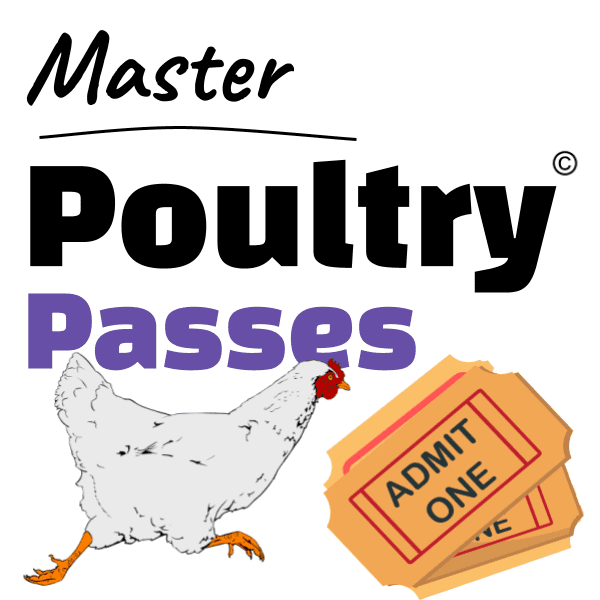
Master The Poultry Business -
Like a Pro!
Poultry Courses Online - most actionable and interactive online poultry course.
Join Poultry Courses OnlineThe bird’s performance won’t lie.
We advise that you don’t either.
Understand that you are aiming for excellence here.
Anything less will be deceiving you of optimal profit.
Oh…
And speaking of ‘profit’…
Let us not forget that once we have established our first ‘draft’ poultry feed mix:
We must calculate the overall cost relative to the volumes typically consumed of commercial grade feed.
Why?
The principal benefit of this whole exercise remember is to:
Save cost!
How much cost is a good enough saving?
This is down to you…but it has to be worth your while:
- time
- effort
- risk incurred to transition & change procurement practices
Put it this way…
Saving 10% of poultry feed costs would save approximately 7% of your overall business costs & overheads…
Adding more profit to your existing margin (assuming all goes well with your feed being adopted readily by your birds.)
Say,
…your poultry farm revenues are 12,000,000 KSh. per annum
…operational costs being 4,200,000 KSh.
…gross profits therefore being 5,800,000 KSh.
…70% of the operational cost being attributed to feed = (4,200,000 x 0.70) = 2,940,000 KSh.
…saving 10% of the feed proportion of cost will add back 294,000 KSh. of cash back into your business (an increase of 5% to your business profits = 294,000 / 5,800,000 x 100)
Important note to add – this is year on year (Y-o-Y)!
(Assumptions: costs of raw materials remain consistent, costs of commercial feeds remain consistent … clearly this won’t happen: so due diligence mus always and continually be taken to audit market prices of feed ingredients to ensure you maintain or even increase your marginal savings.)
The practicalities of making homemade poultry feed formulations and storing feed
The following is advice for a practical method of preparing your own poultry feed mix:
Sourcing
Make sure you source the best quality ingredient product.
Quality directly correlates to:
- content,
- assimilation and;
- yield.
Don’t cut corners – it just isn’t worth it. Aim for the best.
Space prep
Make sure before you start you lay out your feed prep space optimally.
Organise the necessary equipment and containers for the job and ensure clean and dry.
Logistically ensure you have thought through how your will move, carry and store the feed prep once made.
Quantity
Plan your overall composite quantity.
This will dictate each of your ingredient quantities.
Reference your records on typical rates of commercial feed consumption & plan an initial trial outlay & duration.
Purchase and acquisition
Having received relevant quotes and test samples of feed, purchase necessary quantities of individual ingredients.
Allocate additional space for storage alongside your remaining inventory of commercial feed bags…
Remembering that this is a trial experiment involving only a small proportion of birds to begin with…
You will still want to hold inventory stock of commercial feed for your remaining birds.
Don’t mix feed types:
homemade vs. commercial…
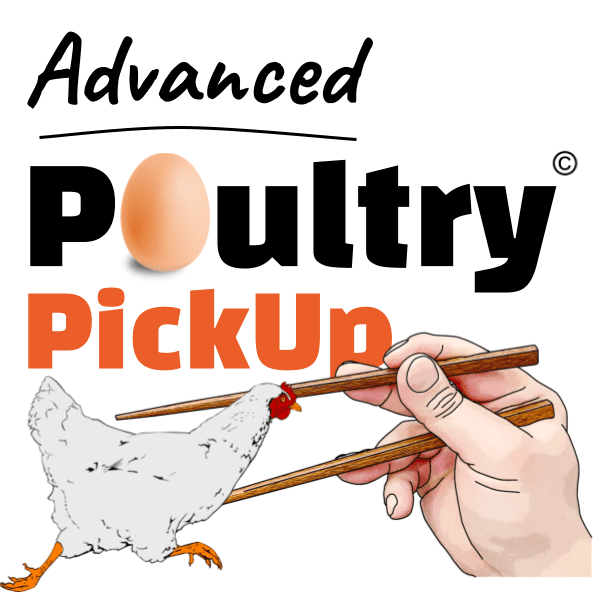
Advance Your Poultry Project -
Into Maximum Profits!
Advanced Poultry Pickup - hands-on, 1-to-1 poultry business consultancy - anywhere.
Start Advanced Poultry Pickup…label carefully, maintain experiment controls well to make confident conclusions.
Sun drying feed
The best practice advice regarding drying – is to sun dry feed ingredients before storage.
This not only dries out food thoroughly and cheaply, but is responsible also for naturally disinfecting ingredients.
Weigh, grind & mix feed
Ensure you have reliable and adequately proportioned scales for the job of measuring out the feed ingredients.
Calibrate the scales to ensure accuracy.
Grinding your ground ingredients is an exact process and requires precision.
Why? Doesn’t feed of any size particle get eaten and digested the same anyway?
No…
Not according to North Carolina State University researchers, C. G. Chewning , C. R. Stark ,1 and J. Brake who state:
“The chicks fed the P300 (300 micromolar pellet) diet exhibited a significantly higher body weight to 21 days, but the difference diminished thereafter.
The 44-days body weight of broilers in the pelletised dietary treatment was higher and feed conversion ratio was better than for those fed mash diets (more powdered feed preparation), as expected.
No significant difference was observed in the feed conversion ratio of birds fed the P300 (1.88) or P600 (1.85) diets at 44 days, respectively.
On the basis of these results, broilers performed better when fed the pelletised diets, and they demonstrated a positive body weight response to feeding finer particles up to 21 d.”
Further reading: Effects of particle size and feed form on broiler performance – Department of Poultry Science, North Carolina State University
There are a number of these types of studies out there which seem to advocate pelletised feed prep as yielding better results in poultry…
But they tend to be broiler-based studies (where weight and feed conversion ration is scrutinised more highly as being a direct root of profitable weight gain)…
Plus, they don’t give any insight to quality measures other than body mass
- e.g. nutritional content of meat or egg produced from homemade feed vs. commercial feed.
Do all feed ingredients have to be ground?
No.
There should be elements of whole grain within your feed for the reasons stated above.
Simply add the whole grains to your ground feed base, after the grinding process.
Now you have a composite feed mix of varying particle size.
Add vitamin, mineral and medicinal supplements
Now,
Prepare a pre-mix of supplementary feed ingredients according to your prescribed calculations:
- vitamins
- minerals
- medicinal agents
…it is generally accepted that a little ground base is the ideal vehicle for carrying this supplement mix.
Avoid the loss of feed material during preparatory phases by dustiness.
Storage conditions
As with all feed storage environments – ensure your feed store is:
- dry (proofing against damp)
- cool
- pest-proof (especially no access for rats and other vermin)
- secure
Example poultry feed formulation recipes
This is a sample mix of ingredients for broiler birds at both starter and finisher stages of growth, as quoted by FAO (please bear in mind the suitability of the detail enclosed is for the South Asian market):
Example broiler feed formulation
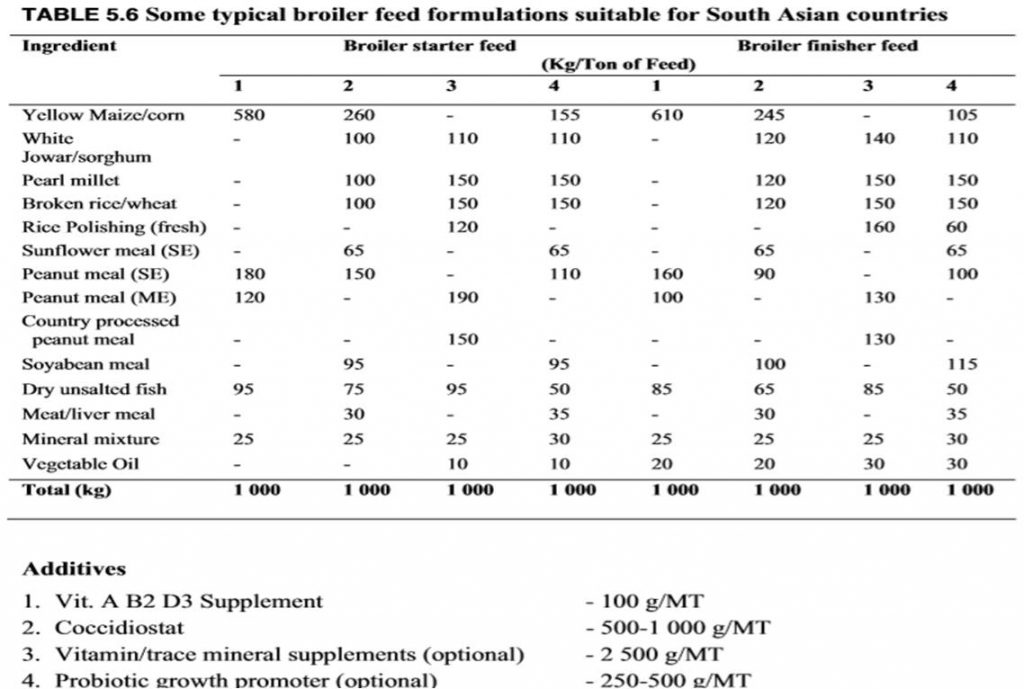
Here is the layer farming version:
Example layer feed formulation
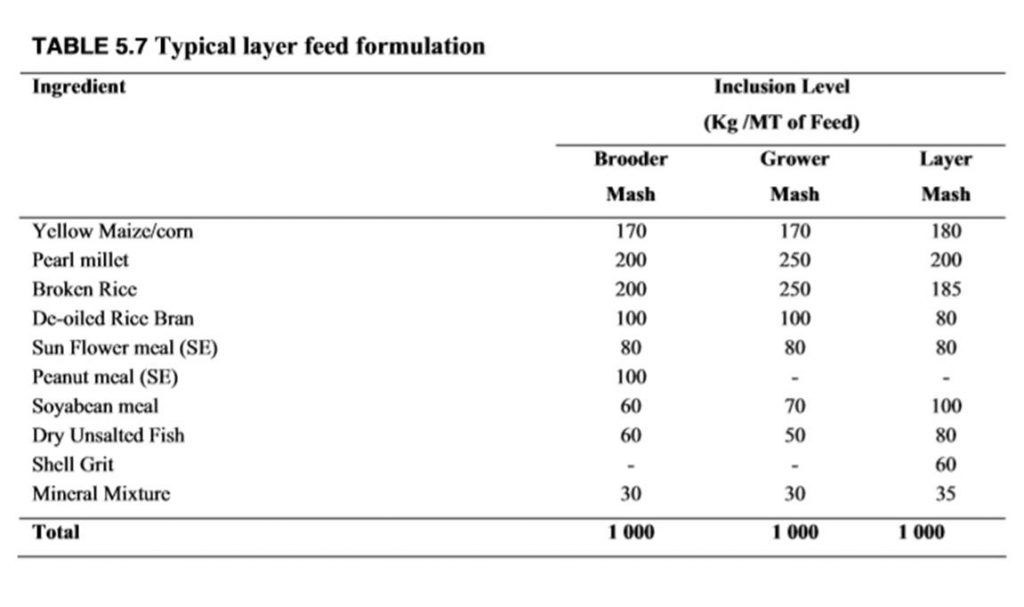
Again, we stress that there is no right and wrong prescription for recipe.
Just what ever your birds like and delivers equal results to the commercial feed.
Conclusion
Making your own poultry feed formulation is primarily a cost saving exercise.
Commercial feed producers carry the costs and burdens of having to prepare the most profitable product mixes…
Using the most cost effective sourcing methods…
- Continual raw ingredient price research…
- Procurement due diligence…
- Importing & customs exercises…
…all to pass on the benefit of an optimally blended mix of chicken feed in a pre-measured bag.
Taking on the challenge of making your own means although you would hope to locally source alternative ingredients…
You become exposed to the market fluctuations of sourcing your own ingredients:
- price
- availability
- quality
…remembering that consistency is the key to a sustainably profitable poultry farm over the long term.
The more variable your input, the variable your output and profit.
DIY poultry feed formulation is a trade-off with substantial risk…
And once begun, becomes a continual ‘work in progress’ to stay ahead of the curve for maintaining advantage.
Consideration should be taken to appreciate the risk involved.
Research well and don’t rush.
Patiently transition – should you decide in favour of the home made approach.
Happy poultry farming!
Do you have a plan to formulate your broiler or layer poultry feed? Need more advice?
Ask us a question.
Have experience of formulating your own feed?
Share advice and pictures with your peers.
Are you a supplier of alternative poultry feed ingredients?
Share your wares here.
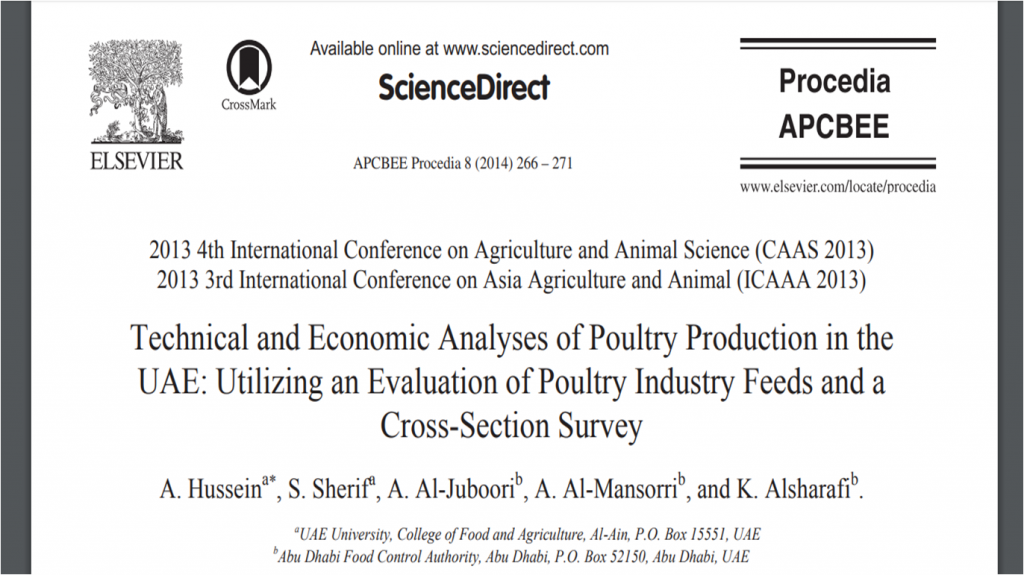
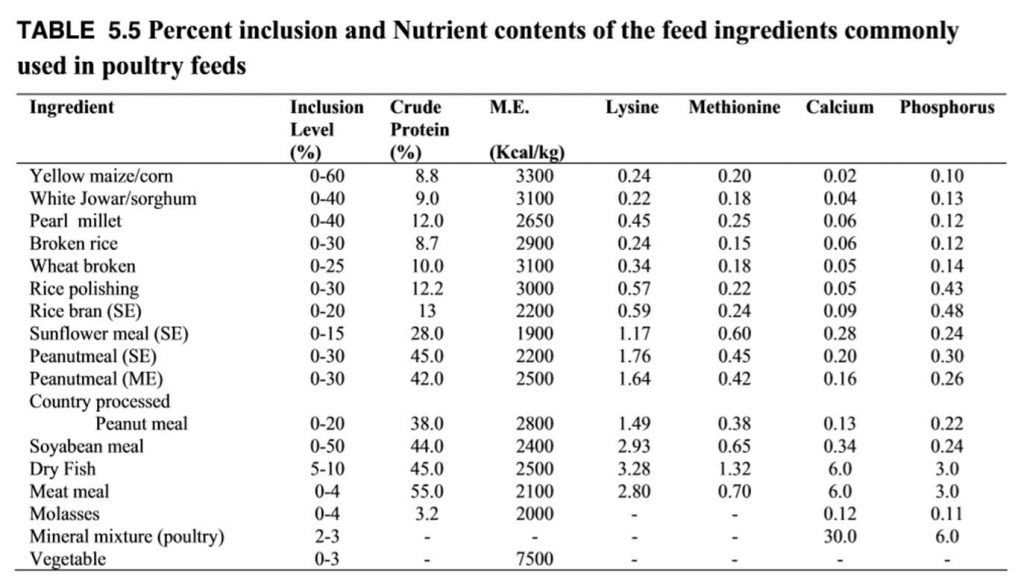
VERY NICE AND INFORMATIVE
Thank you, Odhiambo. I’m glad you found it useful – should you want want any further help with anything in particular, feel free to ask. It’s always my pleasure to help.
Temi @ The Big Book Project
So much informative. I have been serchng for an article like this for a long time. Dear author i am a poultry farmer broiler with 12 thousand birds per cycle. I intend to make my own feed. Though i can arrange machinery but can u guide on to what formula shud i use by specifically showing alternative that could be used. In the table above u have not shown which item is alternate to which.
Dear Gulbadin,
Thank you for taking the time to comment on this blog. I greatly appreciate your sacrifice of time.
I am interested in your broiler farming project. I’m especially enthused by your intention to make your own feed.
Taking the initiative to invest in ‘doing it yourself’ always brings rewards.
However, you first must be willing to struggle a lot and be very patient whilst making the mistakes – until you hit the winning formula.
But this is how we learn. And once we get it working well, the next step is sharing your experience.
In quick response to your question, have you read our article on Alternative Poultry Feed?
It breaks down which ingredients are typically considered like-for-like alternatives.
I also have plans to release a practical guide on making your own poultry feed. For now, when you get a moment read the article I just linked to.
In the meanwhile, if any further useful information comes my way, I will surely message you.
Glad to have heard from you.
Temi
Dear sir, thank you for all the information provided. Very enlightened, detailed and comprehensive. God bless you.
Wow! Thank you so much for this detailed information.
This is indeed way more educative than most articles found on the web where they copy each other word to word.
Please, I intend to start producing my own feed, I am in Nigeria and would like to know the available substitute for the ingredients that we don’t have here.